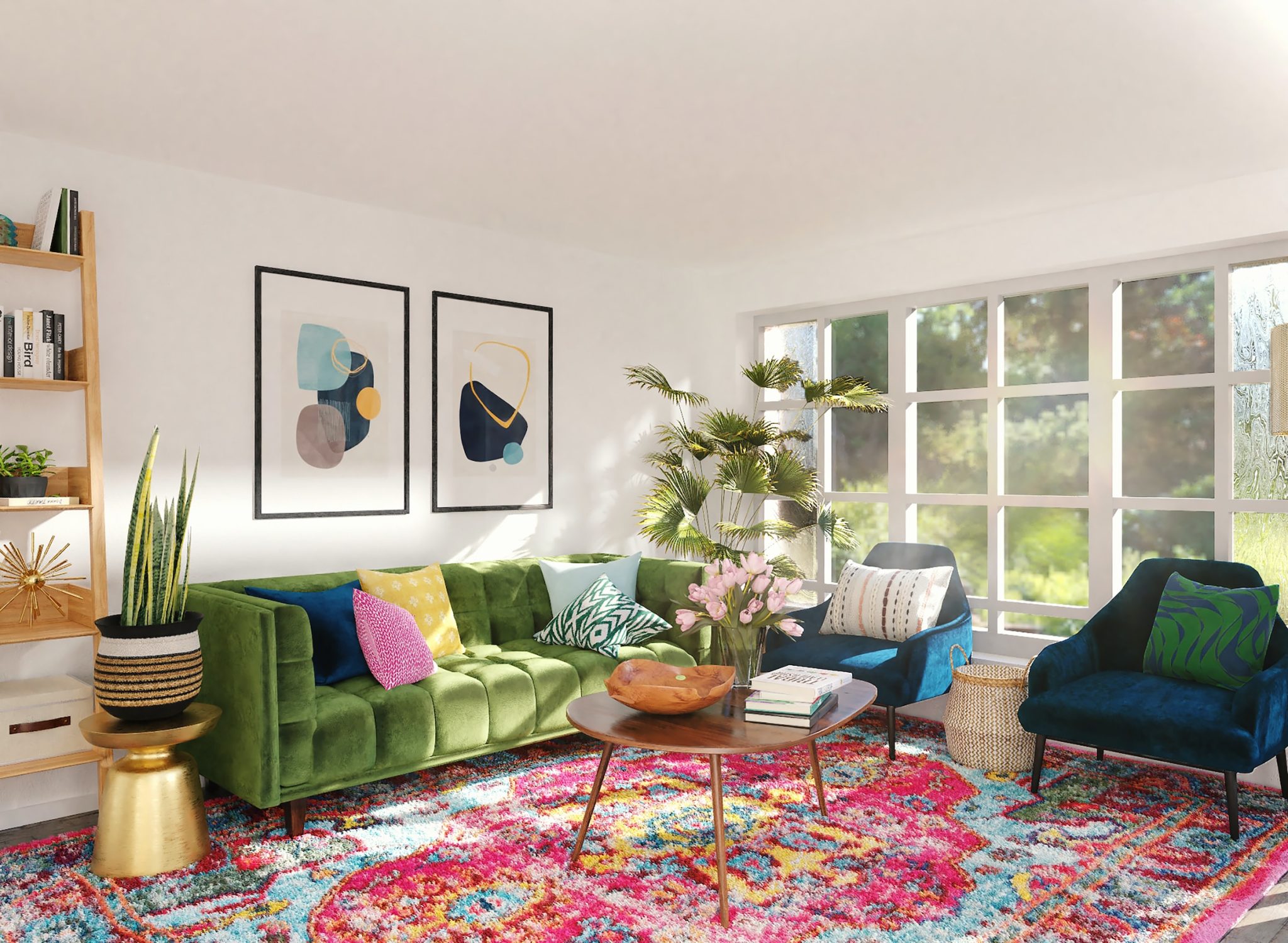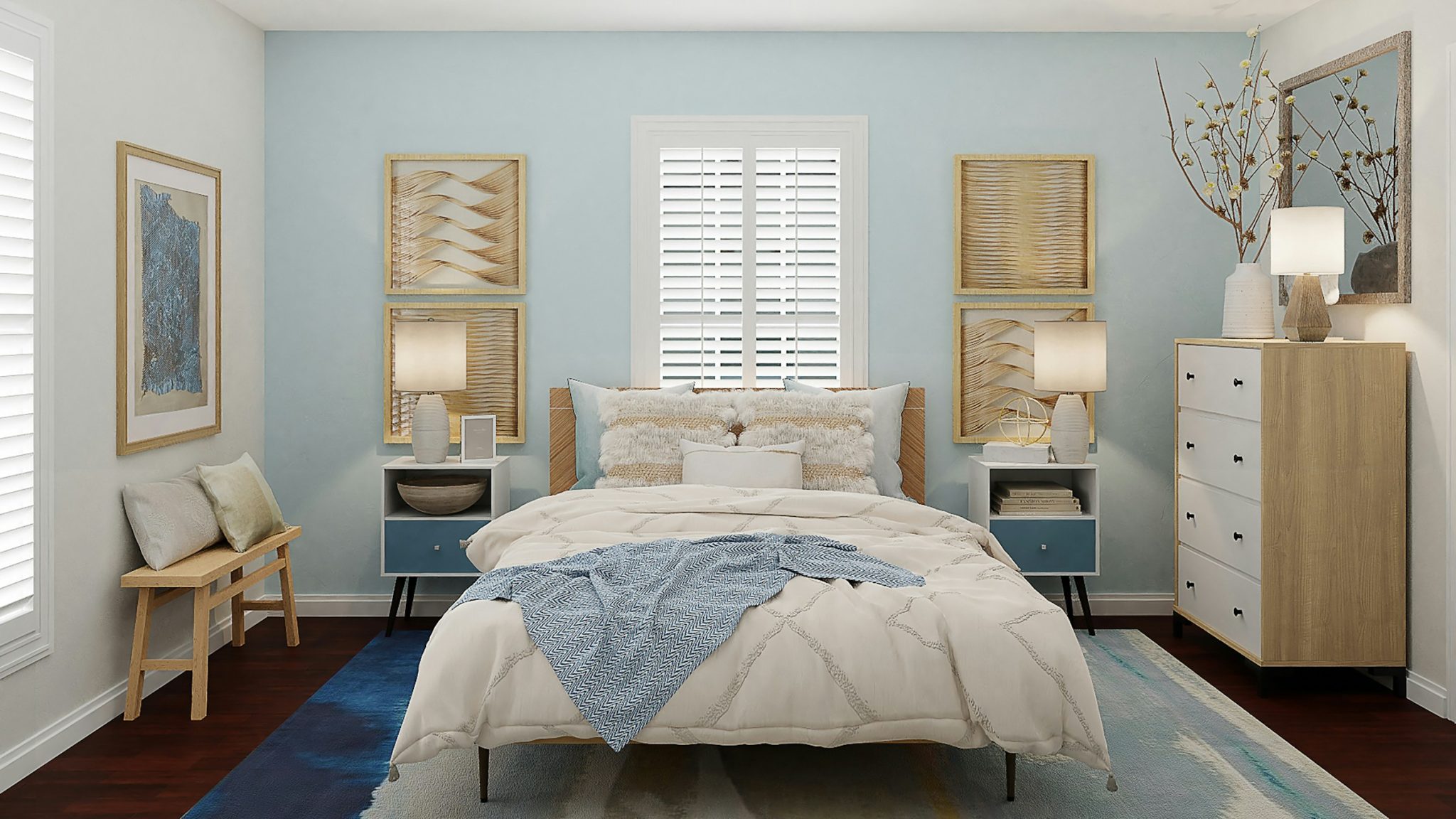Imagine entering a room and feeling peaceful or energized. Your surroundings’ colors caused this response. Designers utilize color theory to explore how colors interact and affect our emotions and perceptions.

Color theory isn’t only for painters and designers planning major projects. This strong tool is essential for interior design, particularly in our houses. Colors may greatly affect the atmosphere and appearance of our living places.
Interior designers must grasp color theory. It helps us coordinate our walls, furnishings, and accessories throughout our houses. Beyond aesthetics, house colors may alter emotions, sentiments, and behavior. A good color palette may transform a dreary room, workplace, or living space into a relaxing getaway.
Whether you’re remodeling or merely refreshing a space, read on to know more.
Table of Contents
Understanding the Color Wheel
The color wheel, a fundamental tool in the field of art and design, is a circle that organizes hues around a central point. It’s a visual representation of colors arranged according to their chromatic relationships. Begin exploring the color wheel by identifying the three primary colors: red, blue, and yellow. These base colors cannot be created by mixing other colors.
When you combine two of these primary colors, you get what’s called a secondary color. Mixing red and blue, for instance, gives you violet, blue and yellow to form green, and red and yellow create orange.
Now, in between these primary and secondary colors are what we call the tertiary colors. These are made by combining a primary color with its nearest secondary color. The result is a two-word color, like red-violet or yellow-green. Together, these twelve hues form a full circle of color.
Warm vs. Cool Colors
In the world of color theory, colors are often grouped into two categories: warm and cool. Warm colors, including reds, oranges, and yellows, bring energy, passion, and liveliness to a space. These are the hues of fire, setting suns, and autumn leaves. Using them in your home’s interior design can create a cozy, welcoming, and intimate environment. They can make large spaces feel smaller and more comfortable and bring a sense of warmth to rooms with little natural light.
In cities like Melbourne, Australia, houses are often designed with warm colors in mind to combat the cold climate. There are many brick reds, burnt oranges, and deep yellows in their homes’ interiors.
You can try to explore Hotondo’s tailored house and land packages in Melbourne to see how warm colors can create a cozy and inviting home. These affordable house and land packages by Hotondo Homes provide maximum convenience and flexibility for homeowners. You don’t have to go through the hassle of finding a suitable lot and designing from scratch. Plus, their team of expert builders and designers can help you incorporate warm colors into your home’s interior design.

On the other end of the spectrum are the cool colors. This group encompasses blues, greens, and purples. Cool colors are often associated with calm, serenity, and relaxation. They are the colors of snow-capped mountains, clear skies, and tranquil lakes. Cool colors in your interior design can create a soothing and peaceful atmosphere.
Whether you choose to use warm or cool colors in your home will depend on the mood you want to create. Sticking with warm colors could be an excellent choice if you’re looking for a vibrant, dynamic space that generates energy and enthusiasm. However, cool colors might be your best bet if you wish to make a tranquil and restful room.
Complementary Colors
Complementary colors are two hues that sit directly opposite each other on the color wheel. They create a sharp contrast when placed side by side, making them ideal for adding visual interest to a room. Using complementary colors in interior design can be an excellent way to add drama and excitement to your space.
However, too many complementary colors can create a jarring and overwhelming effect. So, it’s crucial to use them in moderation and find the right balance with other colors in your design scheme. For example, if you have a mostly blue room and want to add a pop of color, using an orange throw pillow or artwork can provide just the right amount of contrast without overpowering.
Monochromatic Colors
Monochromatic color schemes involve using shades, tints, and tones of a single hue. It creates a harmonious and cohesive room look while offering some variation and interest. It’s an excellent option for those seeking a more subdued and sophisticated design scheme.
To create a monochromatic color scheme, choose your base color and then create variations by adding white, black, or gray to achieve lighter or darker shades of the same hue. You can also add texture and pattern to keep the design from feeling flat. For instance, mixing fabrics in similar shades can create depth and dimension in a monochromatic room.

Accent Colors
Accent colors are hues used sparingly to enhance a room’s overall design. They add interest, depth, and personality to a space without overpowering it. When choosing an accent color, consider the colors you’ve already used in your design scheme and pick something that complements them.
Some excellent options for accent colors include metallic like gold or silver, bold jewel tones, or even a pop of neon for a more modern and playful look. However, it’s essential to use accent colors sparingly and not go overboard. Too many accents can make a room feel cluttered and chaotic.
Conclusion
Color theory is an essential tool in home interior design. By understanding the color wheel and the psychology of colors, you can create a living space that reflects your personality and evokes the mood that you want to create.
Whether you choose warm, cool, complementary, monochromatic, or accent colors, the key is to create a balanced and harmonious color scheme. Remember that colors can affect your emotions and behavior, so choose wisely and create a home that makes you happy and comfortable.
- About the Author
- Latest Posts
Whether she is researching the latest trends in home decor, life-changing destination getaways, or the best way to maintain your finances, Dewey takes pride in leaving no stone unturned. She is passionate about distilling and delivering high-quality information that you can use to upgrade your life.

